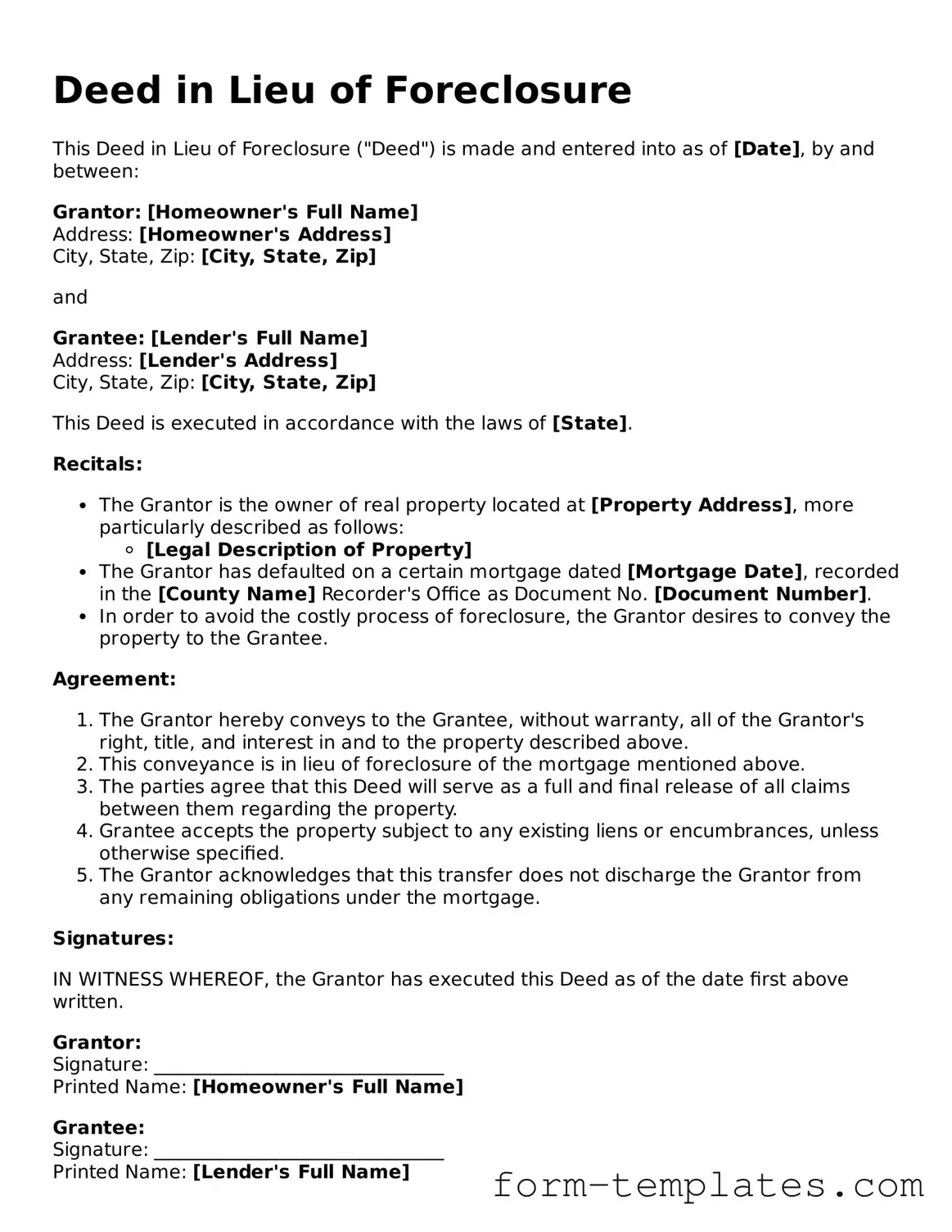Deed in Lieu of Foreclosure
This Deed in Lieu of Foreclosure ("Deed") is made and entered into as of [Date], by and between:
Grantor: [Homeowner's Full Name]
Address: [Homeowner's Address]
City, State, Zip: [City, State, Zip]
and
Grantee: [Lender's Full Name]
Address: [Lender's Address]
City, State, Zip: [City, State, Zip]
This Deed is executed in accordance with the laws of [State].
Recitals:
- The Grantor is the owner of real property located at [Property Address], more particularly described as follows:
- [Legal Description of Property]
- The Grantor has defaulted on a certain mortgage dated [Mortgage Date], recorded in the [County Name] Recorder's Office as Document No. [Document Number].
- In order to avoid the costly process of foreclosure, the Grantor desires to convey the property to the Grantee.
Agreement:
- The Grantor hereby conveys to the Grantee, without warranty, all of the Grantor's right, title, and interest in and to the property described above.
- This conveyance is in lieu of foreclosure of the mortgage mentioned above.
- The parties agree that this Deed will serve as a full and final release of all claims between them regarding the property.
- Grantee accepts the property subject to any existing liens or encumbrances, unless otherwise specified.
- The Grantor acknowledges that this transfer does not discharge the Grantor from any remaining obligations under the mortgage.
Signatures:
IN WITNESS WHEREOF, the Grantor has executed this Deed as of the date first above written.
Grantor:
Signature: _______________________________
Printed Name: [Homeowner's Full Name]
Grantee:
Signature: _______________________________
Printed Name: [Lender's Full Name]
This document may need to be notarized, depending on state requirements.
